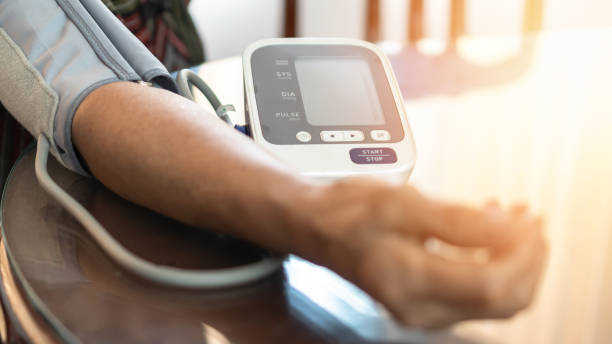Durable medical equipment (DME) plays a vital role in ensuring safety, comfort, and independence for individuals managing chronic conditions or recovering from surgery at home. Whether prescribed for short-term rehabilitation or long-term care, DME is designed to withstand frequent use and help patients perform essential daily activities.
In this blog, we’ll explore the most common types of durable medical equipment, how to obtain it, and what you need to know for proper usage and maintenance at home.
Contents
What is Durable Medical Equipment (DME)?
Durable medical equipment refers to reusable medical devices prescribed by healthcare professionals to assist patients with daily living activities. This equipment is meant to last over time and can withstand repeated use. It supports a wide range of patient needs, from mobility aids to respiratory care.
Some common examples of DME include:
- Mobility Aids: Wheelchairs, walkers, and crutches
- Home Care Beds: Adjustable hospital beds, rails, and mattresses
- Respiratory Equipment: Oxygen tanks and nebulizers
- Bath Safety Devices: Shower chairs, commodes, and grab bars
- Monitoring Devices: Blood pressure monitors and glucose meters
Benefits of DME for Home Use
When transitioning from hospital care to a home setting, DME ensures patients have the tools they need to manage health conditions comfortably and safely. Here are a few key benefits:
- Improves Independence: Equipment like walkers and wheelchairs empowers patients to move around independently.
- Increases Safety: Devices such as grab bars and hospital beds reduce the risk of falls and accidents.
- Supports Recovery: Respiratory equipment or orthopedic aids accelerate recovery and help patients stick to treatment plans.
- Promotes Comfort: Adjustable beds and ergonomic seating reduce discomfort and make caregiving more accessible for family members.
How to Obtain Durable Medical Equipment
Accessing DME typically requires a healthcare provider’s prescription. The process may vary depending on your insurance coverage and location, but here are the typical steps involved:
- Consult with Your Healthcare Provider: Your doctor will assess your needs and recommend specific equipment.
- Verify Insurance Coverage: Medicare, Medicaid, and private insurance plans often cover medically necessary DME, but it’s essential to confirm specific policies.
- Find a Certified Supplier: If necessary, work with an accredited DME supplier that can provide delivery and installation services.
- Submit Necessary Documentation: Your healthcare provider may need to submit prescriptions or authorizations to your insurer and the supplier.
Insurance and DME Coverage
Many insurance plans, including Medicare Part B, cover the cost of durable medical equipment if deemed medically necessary. Here are some important considerations regarding coverage:
- Medicare Part B: Covers 80% of the cost of DME, with patients responsible for the remaining 20%. The equipment must be prescribed by a doctor and provided by a Medicare-approved supplier.
- Medicaid: Coverage varies by state, but Medicaid programs generally cover a wide range of DME.
- Private Insurance: Many private insurance plans cover DME but may require prior authorization. Be sure to check if your plan includes copayments or deductibles.
- Rental vs. Purchase: Depending on the expected duration of need, some equipment may be rented rather than purchased.
Tips for Proper Use and Maintenance

Proper use and maintenance are crucial for ensuring that DME remains effective and safe over time. Below are some tips to help patients and caregivers make the most of their equipment:
- Follow Manufacturer Instructions: Read the manual and follow the recommended usage guidelines.
- Keep Equipment Clean: Regular cleaning prevents the buildup of dust, bacteria, or mold, especially for respiratory devices.
- Schedule Routine Maintenance: Some equipment, such as hospital beds and wheelchairs, may require periodic servicing to ensure optimal performance.
- Monitor for Wear and Tear: Inspect equipment regularly to ensure it remains safe for use. Replace damaged or worn-out components promptly.
- Educate Family Members and Caregivers: Ensure everyone involved in care understands how to use the equipment correctly.
Key Considerations for Choosing DME
Selecting the right DME depends on the patient’s specific needs, living environment, and care plan. Here are some factors to consider:
- Comfort and Usability: Choose equipment that the patient can use comfortably and independently when possible.
- Home Accessibility: Ensure the equipment fits into your living space and can be safely operated in the home environment.
- Adjustability and Features: Look for customizable options to enhance patient comfort and care.
- Availability of Support Services: Work with suppliers that offer training, installation, and repair services.
Wrapping Up
Durable medical equipment plays a crucial role in home care, helping patients maintain independence, recover comfortably, and manage chronic conditions. Patients and caregivers can ensure a safer and more comfortable home environment by understanding the types of equipment available, how to obtain it, and the importance of proper usage and maintenance. With the right tools and support, patients can experience improved quality of life and peace of mind during their healthcare journey at home.

